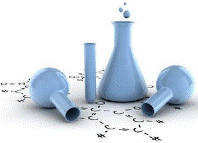Chemical and Biomolecular Engineering, Department of
ORCID IDs
0000-0002-7682-6912
0000-0002-5647-3793
Date of this Version
2018
Document Type
Article
Citation
ACS Appl Mater Interfaces. 2018 July 05; 10(26): 21825–21835
Abstract
The blood–brain barrier (BBB) is an active and complex diffusion barrier that separates the circulating blood from the brain and extracellular fluid, regulates nutrient transportation, and provides protection against various toxic compounds and pathogens. Creating an in vitro microphysiological BBB system, particularly with relevant human cell types, will significantly facilitate the research of neuropharmaceutical drug delivery, screening, and transport, as well as improve our understanding of pathologies that are due to BBB damage. Currently, most of the in vitro BBB models are generated by culturing rodent astrocytes and endothelial cells, using commercially available transwell membranes. Those membranes are made of plastic biopolymers that are nonbiodegradable, porous, and stiff. In addition, distinct from rodent astrocytes, human astrocytes possess unique cell complexity and physiology, which are among the few characteristics that differentiate human brains from rodent brains. In this study, we established a novel human BBB microphysiologocal system, consisting of a three-dimensionally printed holder with a electrospun poly(lactic-co-glycolic) acid (PLGA) nanofibrous mesh, a bilayer coculture of human astrocytes, and endothelial cells, derived from human induced pluripotent stem cells (hiPSCs), on the electrospun PLGA mesh. This human BBB model achieved significant barrier integrity with tight junction protein expression, an effective permeability to sodium fluorescein, and higher transendothelial electrical resistance (TEER) comparing to electrospun mesh-based counterparts. Moreover, the coculture of hiPSC-derived astrocytes and endothielial cells promoted the tight junction protein expression and the TEER value. We further verified the barrier functions of our BBB model with antibrain tumor drugs (paclitaxel and bortezomib) and a neurotoxic peptide (amyloid β 1–42). The human microphysiological system generated in this study will potentially provide a new, powerful tool for research on human BBB physiology and pathology.



Comments
Copyright 2018 American Chemical Society
doi:10.1021/acsami.8b03962